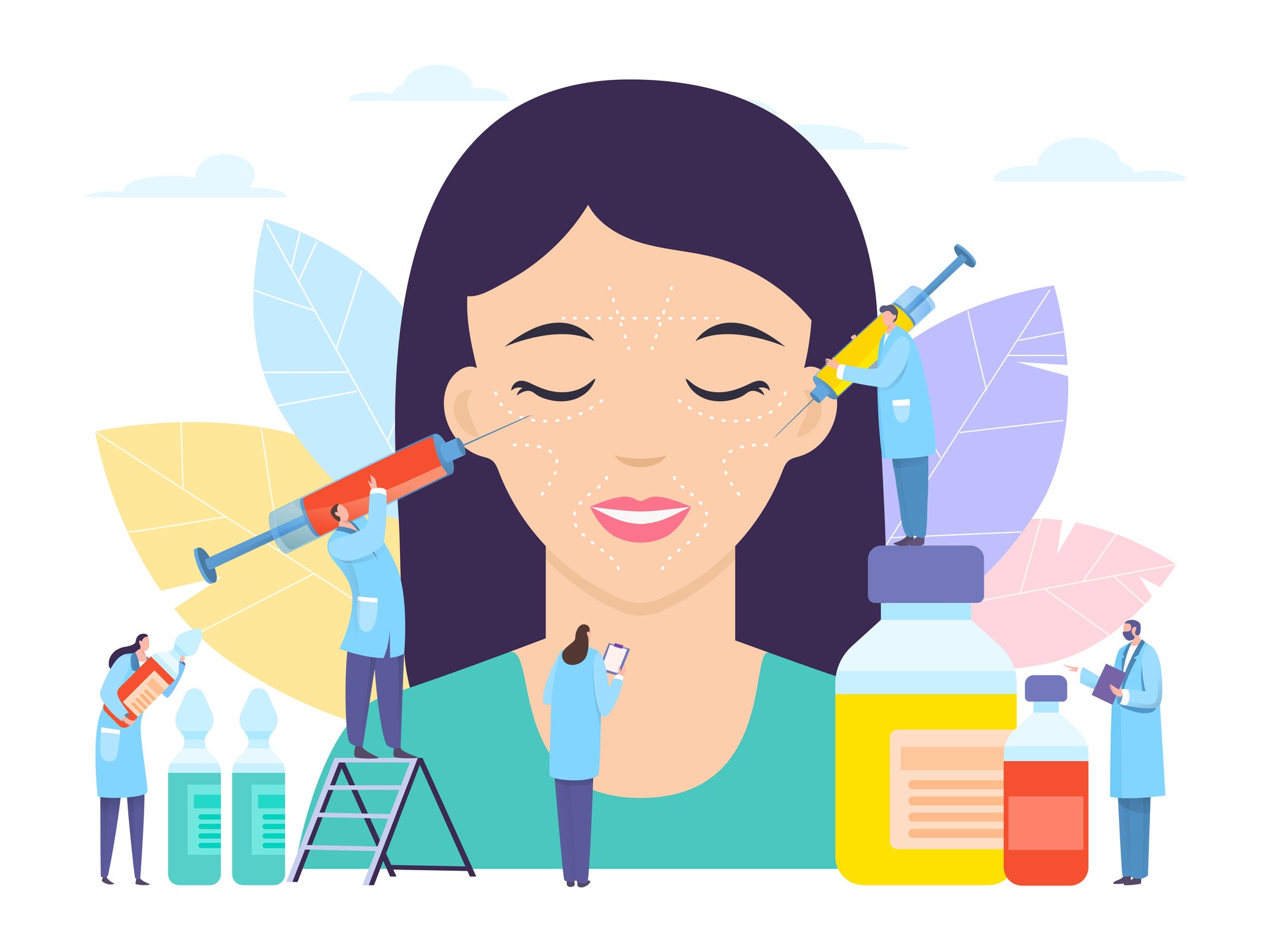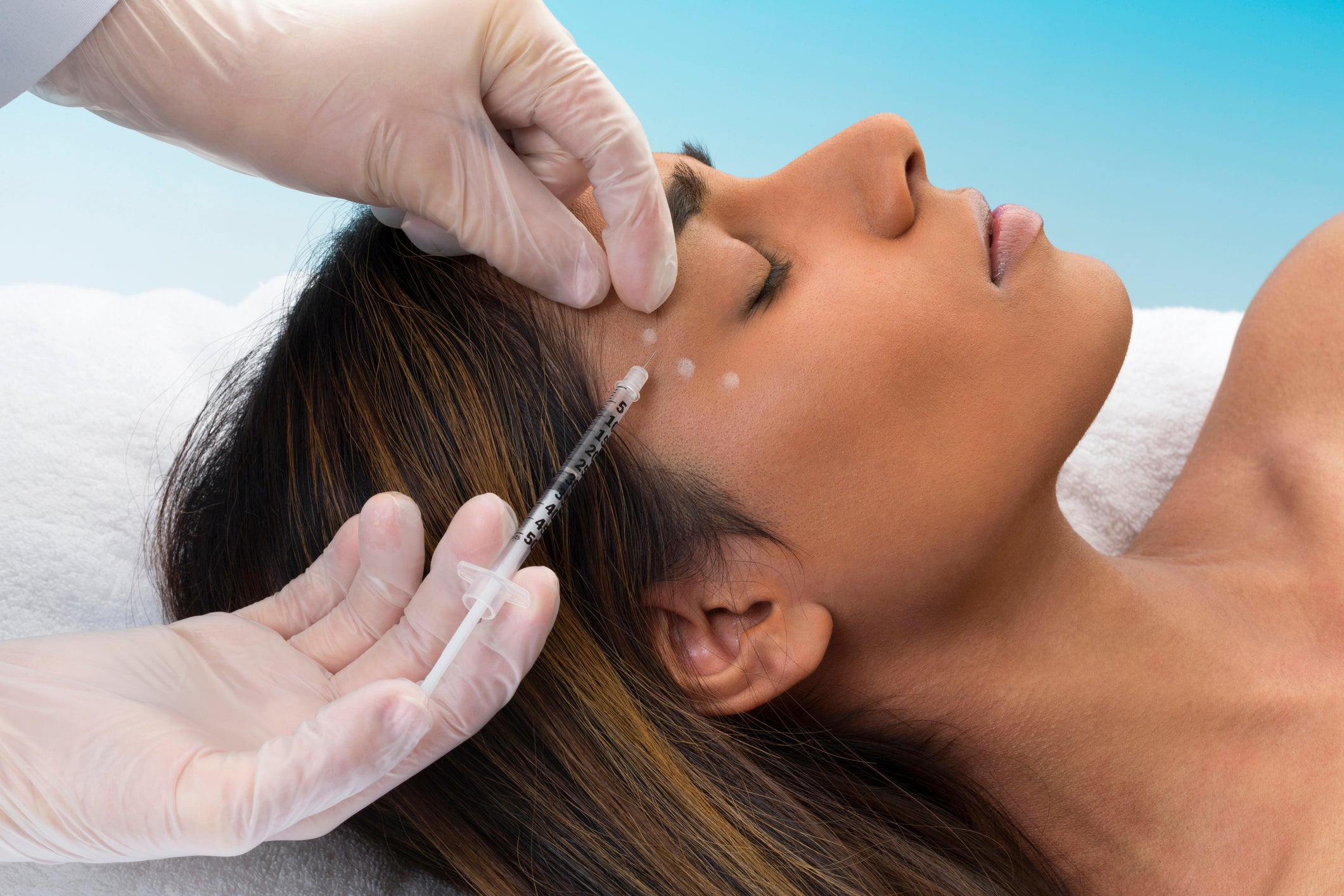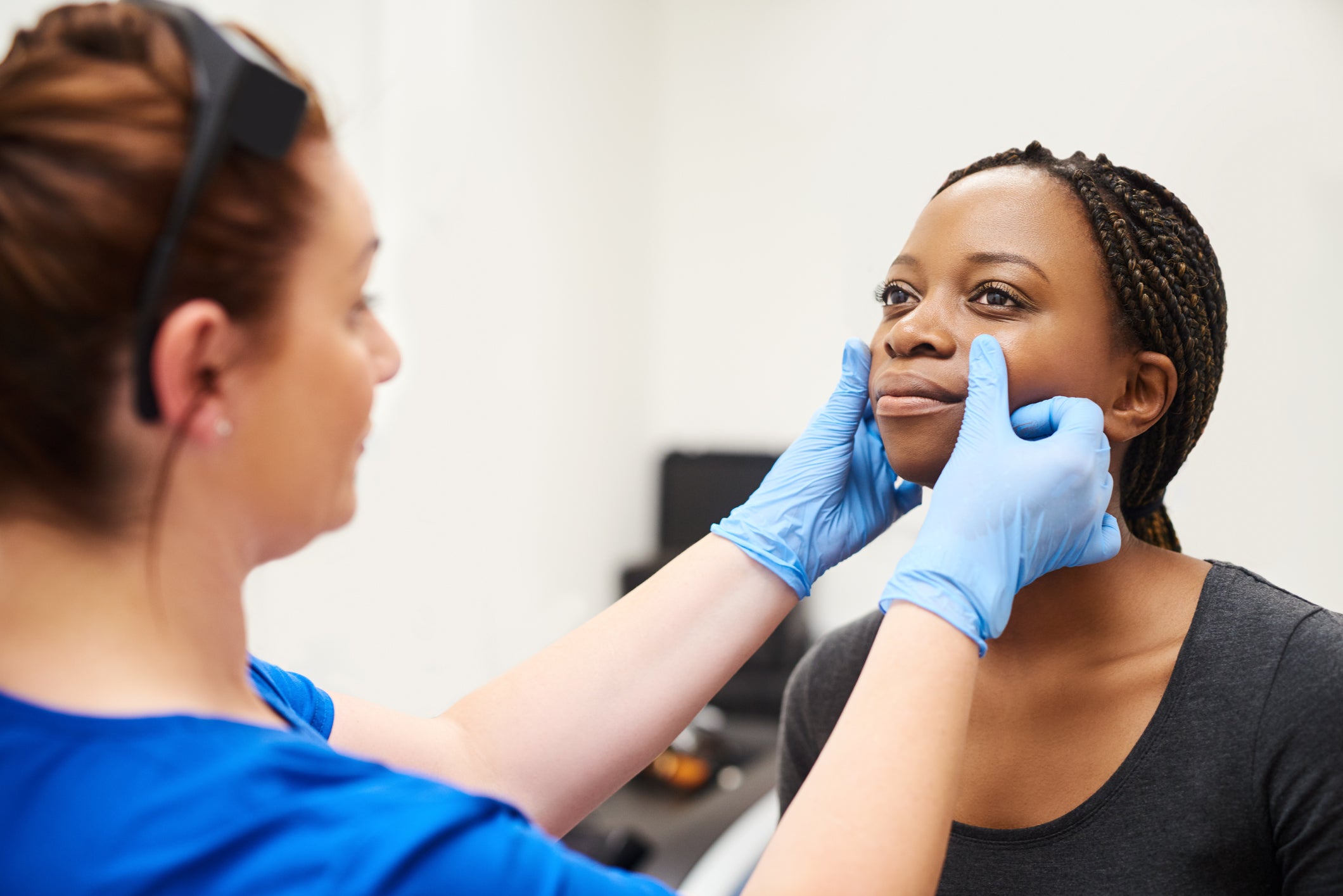‘It’s not a Groupon situation’: How ‘baby Botox’ became the norm
Increasingly people in their 20s and 30s are getting Botox injections, looking to prevent the signs of ageing before they start to take place this is known as ‘baby Botox’, writes Jessica Schiffer

Forget what you think you know about Botox. Once considered the not-so-secret tool of celebrities and the wealthy with a bad rap for freezing faces, the wrinkle-melting injections has become a commonplace activity of a normie class with money to spare.
“Many millennials prioritise taking care of themselves early on and really believe in prevention,” says Dr Panta Rouhani Schaffer, a dermatologist who has seen an uptick in younger patients requesting Botox in the past few years. “That just got amplified during the pandemic, when people have spent so much time staring at themselves on screens.”
But they’re looking for results a la J. Lo, not Jocelyn Wildenstein. It’s a softer approach, called “baby Botox” by some and “preventive Botox” by others, that is changing the common question, “Would you ever get Botox?” to “When will you start?”
Read More:
The answer from millennials and Gen Zers is, increasingly, in their 20s and 30s, ages when most baby boomers and Gen Xers were not yet fretting over ageing with the same all-consuming anxiety. (See: sun cream, considered a must today but an afterthought for many until the early 1990s.)
Leah Walkiewicz, a 27-year-old product manager, has been getting Botox in her forehead since she was 24, a decision spurred by what she feels was early wrinkle formation and a close look at how her family ages.
This forthrightness has been particularly transformative among women of colour, who are often left out of conversations and marketing about cosmetic procedures
“I always had obvious fine lines on my forehead, and make-up would settle into those lines really obviously,” she says of her decision to start so young.
Despite some nerves, the discreet shots her dermatologist administered led her to return for more, approximately every 10 months. This year she has moved beyond getting Botox in the forehead and glabella (the area between the eyebrows) to test out injections in her “crow’s feet”.
“It’s been crazy to see the progress,” Walkiewicz says. “If more people had told me what you can do with Botox sooner, I would have gone a couple of years earlier.”
From stigma to sharing
Social media has been both a blessing and a curse in our relationship to Botox. While the selfie-heavy platforms have made it easier than ever for people to compare and despair over their looks, they have also helped destigmatise and increase education about the once-taboo subject.
Kathryn Gongaware, a 32-year-old yoga teacher and comedian, was always curious about Botox, but it wasn’t until she started mentioning it to friends and realised that people she wouldn’t have expected (including her au-naturel-everything acupuncturist) were getting it that she felt comfortable making the jump at age 30.
“The more people were open about it, the more it felt destigmatised,” she says.
This forthrightness has been particularly transformative among women of colour, who are often left out of conversations and marketing about cosmetic procedures. There’s also a deeply rooted stigma in many communities of colour that by opting for cosmetic procedures that have inclined towards European beauty ideals, you’re rejecting your roots, said Dr Onyeka Obioha, a dermatologist who has been getting Botox since she was 25.
“Historically, and even today, the majority of advertisements for cosmetic procedures do not feature or target minorities,” Obioha says. “But now with social media, there’s more attention given to the fact that women of colour also get cosmetic procedures, so the stigma surrounding them seems to be decreasing.”
While online sharing has helped reduce the stigma, it brings with it some negative aspects, too — namely, young people thinking they need to start Botox because their friends are doing it.

“I’ve had 20-year-olds in college come in without knowing anything about Botox who really don’t need it, but they have this sense of FOMO because their friends are doing it,” says Dr Sheila Farhang, a dermatologist and cosmetic surgeon, who doles out skin-care tips to thousands of followers on Instagram and YouTube. “I will not inject someone that age, and I try to explain to them why they really don’t need it.”
The difference in ‘Baby Botox’
A shift in how Botox is administered is also helping convince younger people to try it. “When Botox first came out, people were using it to really isolate and freeze the muscles, so that frozen look was what people associated it with,” Schaffer says. At the time, doctors were using 20 to 30 units in one area or muscle alone, a dosing that has lowered significantly in the past 10 years.
“People are starting to appreciate that by doing less, you still get a very nice softening that gives people enough of what they want to see in terms of tightening and retexturising,” she says.
“Baby Botox” involves using 20 to 35 units spread out across multiple muscles in the face, most commonly in the forehead (two to 12 units), glabella and brow area (20 to 22 units) and the corners of the eyes (three to four units per eye). The result when done right is a refreshed look that doesn’t render one’s face immobile.
Most patients in their 20s and 30s are looking to smooth out fine lines and prevent the formation of deep, static wrinkles in the future. “With Botox, over time, you’re thinning out that muscle and using it less, so those lines don’t really get etched in,” Schaffer says.
For some patients, the benefits of Botox extend beyond preventing wrinkles. Farhang uses small doses of Botox in the muscle above the lip to flip it out so it looks fuller; in the columella area just below the nose to raise the nasal tip a millimetre; and in the muscles at the corners of the jawline for slimming purposes.
While these injections don’t last as long as traditional Botox, because of lower doses and increased muscle movement in these areas, “they offer little tweaks” that can make a difference in one’s appearance,” Farhang says.

What could go wrong?
While less risky than filler injections, Botox is not always the Benjamin Button miracle cure it’s made out to be. Proceeding with caution, particularly when starting young, is key.
“Botox is very much a medical procedure,” Farhang says. “It’s not a Groupon situation.”
On the plus side, the impermanence of Botox means that even if an injector overdoes the dosage, it will wear off without long-term facial alteration. With continued high doses, your muscles can technically atrophy, or lose their strength. But with other muscles moving in the face, that’s not something you’ll necessarily notice, Farhang says, and some research has shown that if you take a break from Botox, those muscles rebuild.
Although it’s rare, some patients who start with high doses in their 20s say their skin has thinned over time, but experts say this has not been shown in research literature. In fact, some studies suggest that Botox can improve the elasticity of skin.
Still, Schaffer says, “one could postulate that the skin may feel thinner or appear crepey because the muscle mass that was providing volume under the skin has decreased.” To avoid such eventualities, it’s best to find a doctor with a conservative touch and supplement the procedure with skin-supporting routines like daily SPF.
Read More:
As for the concern that your body will get “used to” Botox and stop working, doctors say there’s little such evidence. “In my experience, many patients just require fewer units over time because their facial muscles are less dynamic and thus require less,” Schaffer says.
Despite its impermanence, “bad” Botox can last for months, making it risky for your self-esteem. A few weeks ago, Farhang saw a bride-to-be three weeks out from her wedding with a droopy eyelid from having been injected too low and too deep in the forehead and brow area.
“There’s literally nothing I can do to fix it until it wears off, besides prescribing her an eye drop that activates that muscle a bit,” she says. “It may be temporary, but four months is a really long time to look wonky.”
© The New York Times
Join our commenting forum
Join thought-provoking conversations, follow other Independent readers and see their replies
Comments
Bookmark popover
Removed from bookmarks